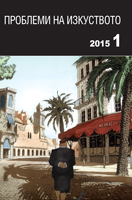Комикс и кино
Comics and film
Author(s): Pencho KunchevSubject(s): Fine Arts / Performing Arts, Visual Arts, Film / Cinema / Cinematography
Published by: Институт за изследване на изкуствата, Българска академия на науките
Summary/Abstract: Though the so-called ‘stories in prints’ were pioneered in 1830 by Swiss writer Rodolphe Toepffer, the US are believed to be the birthplace of comics. Comics emerged in the late nineteenth century to meet the need of visual communication with the influx of non-English-speaking immigrants. The framed illustrations were graphical metaphors of the writings. Great film director Alain Resnais called comics the ‘essence of framed and privileged moments’. It is the time factor that unites comics and film. The earliest authors of animated films have created comics as well. With its structure of representation, comics influenced feature film and were used to diversify media of expression in animated films. The storyboard could be said to be the common denominator between comics on the one hand, and feature and animated films on the other. A storyboard is a visualized rendering of a written script, which goes beyond the common comics. A storyboard offers the composition of the shots and the range of colours therein, the point of view of the camera, the links between the shots … Storyboard artists on animation films develop further the character types, adding new storylines to the action and enriching it with a number of gags. The power of comics, defined by some as the ‘ninth art’, shows also in its impact on contemporary fines arts. Opening up new horizons for the artistic potentials of comics is a task to be undertaken both by the contemporary and the future generations of artists.
Journal: Проблеми на изкуството
- Issue Year: 2015
- Issue No: 1
- Page Range: 37-42
- Page Count: 6
- Language: Bulgarian
- Content File-PDF

